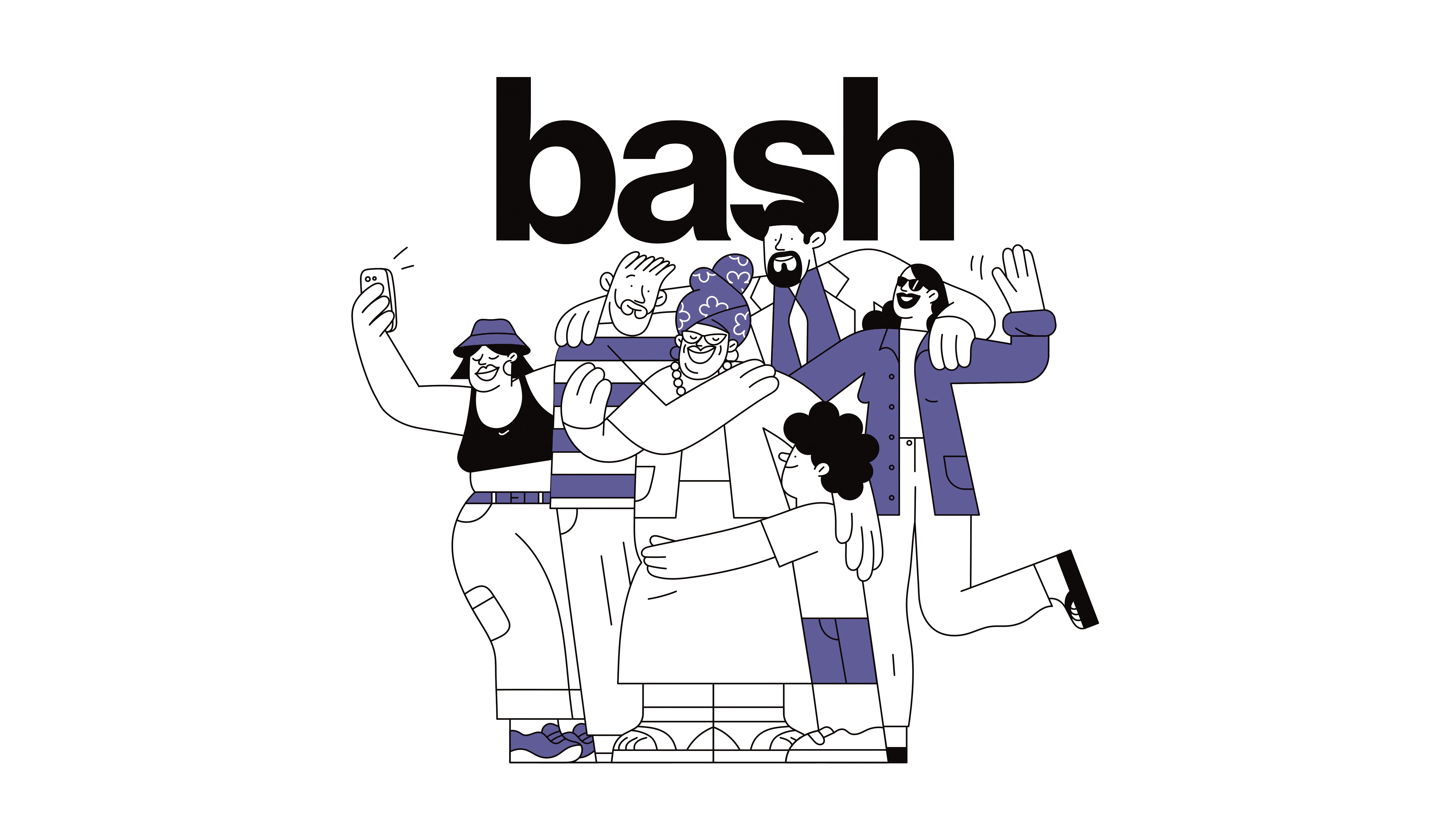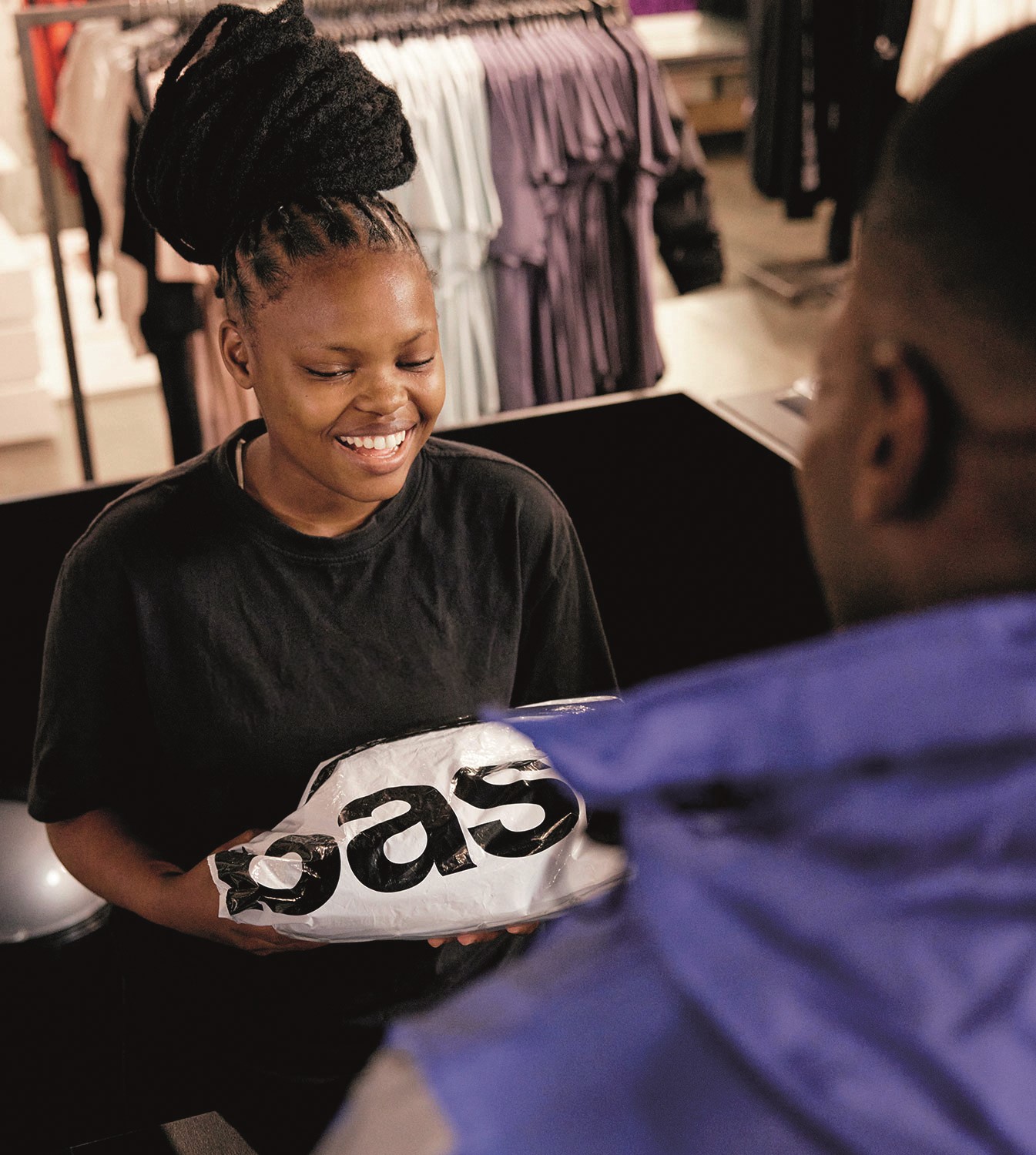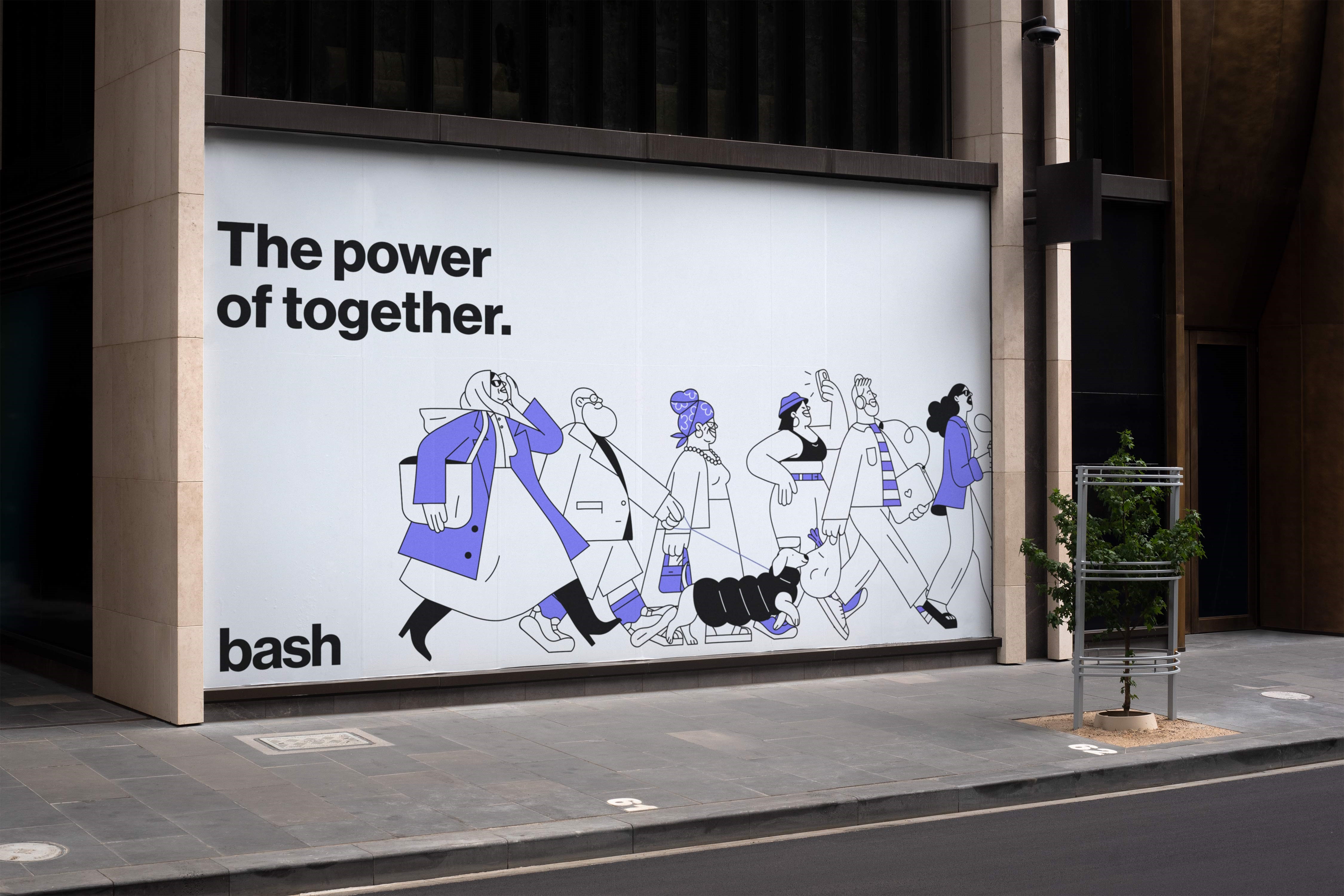Igniting the retail revolution

Throughout Africa, an e-commerce revolution is stirring. David Benady explores how brand design helps differentiate competitors and meets the needs of diverse audiences.
South Africa’s recently launched fashion platform Bash, which uses spare designs and playful cartoon graphics to signify the rainbow nation’s diversity, joins a surge of e-commerce platforms launching across Africa.
Bash launched in February 2023 and its mobile app went to the top of the app charts – it has already been downloaded a million times. The launch comes amid frenetic e-commerce activity in Africa as Amazon readies its first foray into the continent with a proposed launch in South Africa in 2024, and as a flurry of other new platforms transform the retail scene.
An intriguing recent addition to the trend is Ananse Africa, an online marketplace where local creatives showcase their fashion creations to sell in markets across the continent and internationally.
Promising an “African style revolution” with a range of extravagant designs, the ground-breaking platform was created by entrepreneur Samuel Mensah. “What we're trying to do is give African fashion entrepreneurs the tools and the skills to be able to trade around the world, make it seamless and remove the obstacles around payments and logistics, and some of those challenges that inhibit trade across borders,” he told CNBC Africa.
Collaborating with hundreds of designers and entrepreneurs across Nigeria, Ghana, Kenya, Senegal and Ivory Coast, the site is looking to overcome the hurdles to trade across Africa. Mensah told the station that with 54 countries and territories, moving products across those diverse nations is challenging. The platform works with Ecobank, which operates in 33 countries, to surmount the obstacles to payment.
Ananse Africa’s launch comes as the electronic and mobile commerce landscape in Africa grows strongly as mobile take-up explodes. Platforms such as Takealot.com and Superbalist in South Africa, Killimal in Kenya and Jumia – which launched in Nigeria and operates across nations – are reshaping the way Africans shop.
Eager to participate in the mobile commerce boom, Bash was launched by one of South Africa’s biggest bricks and mortar store owners The Foschini Group (TFG), which owns numerous fashion brands in the country. It also owns UK chains such as Hobbs, Phase Eight and Whistles.

A centralised platform selling fashion from TFG’s roughly 20 retail chains with over 3,000 South African stores, Bash is the brainchild of entrepreneurs Claude Hanan and Luke Jedeikin, co-chief omnichannel officers for Bash. The duo previously created Superbalist, a successful South African e-commerce fashion site which they sold to online giant Takealot. Working with TFG, they hired Barcelona-based branding agency Mucho to help develop the new fashion site, design the branding and launch the platform.
Bashing out ideas
“Our mission is to unlock the transformative power of bringing people together,” Hanan explains. And given the task of uniting nearly two dozen retail offers in one platform, “simplicity was a key tenet,” says Jedeikin.
Naming the site was a massive challenge. First and foremost, they were looking for a short, snappy name that was easy to remember. “We wanted it to be impossible to misspell,” says Jedeikin. “We live in a country with 11 official languages – so can the name pass the radio test? If you hear it on a radio you must be able to type it into the internet without misspelling it,” he adds.
A long list of 800 names was narrowed down to five. The brand needed to be trademarked in 14 different classes – from website and app to Bash private label goods, Bash financial services and possibly one day a Bash “superapp”. The name ‘Bash’, with its crunchy sound, easy four-letter spelling and double meaning of both hit and party, popped out as winner of the naming process.
Mucho was tasked with creating a brand design which simplified the complexity of bringing together so many brand names on to one platform. The design reflects this through the language of visual simplicity – for instance, using a sans serif typeface, rather than serif.
Simple, bold black and white colours with a hint of purple – the corporate colours – were chosen to differentiate the platform from each of the store brands, which all have their own identity and colours. Jedekein says the brand values of Bash can be summed up with an acronym: bold, accessible, simple and human.
Key to the platform is that it offers an omni-channel experience bringing together the in-store and digital experience, so goods can be ordered online and collected and returned in-store and the many various elements – website, app, physical stores, delivery – all work together. This contrasts to the online-only approach pursued by the likes of Amazon.
Jedeikin says that multichannel e-commerce platforms such as Amazon and others can be quite predatory towards physical retailers, which they are looking to displace. Omnichannel marketplaces “are much more benevolent to retail stores,” he says. They wanted this element of the offer to come across in the branding, promoting values of community.


He adds that Bash is an “enabling” brand. TFG has 30,000 employees who are enabled by the platform. The couriers and drivers are enabled by having more parcels to transport, while the customers are enabled by having a wide range of fashion brands to choose from. All this needs to come through in the platform design.
Meeting diverse needs
The success of the launch demonstrates the power of the branding – its warm, accessible offer is easy to understand and attractive to shop.
The smartphone app makes up some 80% of Bash’s commerce, compared to 20% online, reflecting the strength of mobile commerce in South Africa.
Mucho’s associate partner Javier Lopez says the platform has used an illustration-style approach that is both modern and friendly. “It represents different people from South African culture,” he says. “Everything is about welcoming everyone and being diverse and inclusive with a sense of community.”
The illustrative cartoon style is used mostly in the mobile app, such as at the point of purchase and in some advertisements with online banners. Regarding the layout and design of the platform, Lopez says, “The site is product oriented, and the photography is very lifestyle focused, representing the day-to-day life of South African culture. It’s modern and focuses on a young audience.”

He says that while general e-commerce platforms such as Amazon tend to focus on convenience and price, the experience of Bash is more visually appealing and akin to fashion sites such as Zalando or Asos.
TFG has operations in Botswana and Namibia, and Jedeikin says extending Bash into other markets is on the cards, though the current focus is on the South African market. For a wider roll-out across Africa, the Bash finance capability will need to be developed to enable cross-border payment.
A booming market
Across Africa, the surge in e-commerce heralds a retail revolution, says Kirsty Bisset, managing director at marketing agency HaveYouHeard Durban. The e-commerce market is projected to hit US$6.36bn in South Africa in 2023, a trend mirrored in several other African nations. Improved internet access and a rapidly growing middle class are driving factors in this growth.
“Branding plays a pivotal role in distinguishing these e-commerce platforms,” says Bisset. “For instance, Takealot and Superbalist, operating in South Africa, are renowned for their extensive product offerings and swift delivery services. In contrast, Kilimall in Kenya capitalises on its local appeal, while Jumia stands out for its vast Pan-African presence. These branding strategies are designed to cater to their unique customer bases.”
She says that the e-commerce platforms engage customers through customised marketing campaigns, localised content and strategic partnerships. An example is Jumia's "Everyday a Big Day" campaign, which she says “resonates with the aspirations of everyday Africans.”

Meanwhile, Kilimall employs local influencers to “establish meaningful connections with Kenyan consumers.”
The branding of e-commerce platforms underscores their commitment to customer-centricity and innovation, she adds. Local brands focus on cultural relevance and insights into the motivations of African consumers. They often employ vibrant colours and imagery that resonate with their target audience.
With 489 million mobile subscribers in Sub-Saharan Africa and 287 million mobile internet users – 25% of the population – there is still room for considerable growth in smartphone take up. Many e-commerce sites are looking to one day mimic Asian-style superapps, which combine a variety of services and crucially offer finance and payment, which is vital as many Africans are unbanked.
Services such as M-Pesa, which operates in Kenya and other African countries, are a model for others to follow. While the logistical challenges of cross-border trade, payment and delivery are considerable, the branding work required to create e-commerce services and super apps is hugely exciting.
Africa’s design heritage, with its diverse cultural tapestry and blend of traditional elements with modern styles, offers a rich pallet to inspire brand designers as the e-commerce boom rumbles on.
This article was taken from Transform magazine Q4, 2023. You can subscribe to the print edition here.













